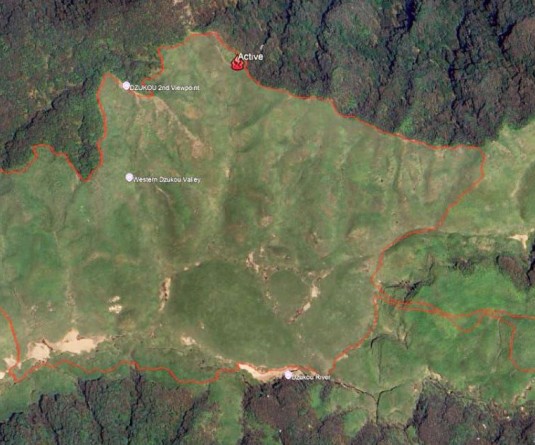
Ashikho Pfuzhe
Dimapur | August 2
The presence of the spotted locust or “Aularches miliaris” (scientific name) in the rich agricultural belt of Medziphema sub-division in Dimapur district has send alarm bells ringing not only among agriculturists but also pineapple farmers.
After the reported destruction of an entire cashew plantation in the area, there are apprehensions that the ravenous locusts may next target the succulent pineapple farms in Medziphema area, touted as the “sweetest pineapple” producing belt in the world.
“I have not seen the locusts with mine own eyes, but as per media reports of their ravenous nature, these insects are most likely to attack our pineapple farms next. The government and agriculture department should take immediate and preventive steps to prevent further damage to crops or plantations”, said a pineapple grower of Medziphema town.
The apprehensions of the pineapple growers are not without basis as proved by an on-the-spot visit to “Midway Resort” between Dimapur and Kohima where the swarm of locusts are presently spotted.
Medziphema, one of the “rice bowls” of Nagaland is also home to the famed School for Agriculture Sciences and Rural Development (SASRD).
Besides the banana plants and sub-tropical trees and grasses on which most of the locusts are concentrated and feeding upon, at least a dozen of the ravenous locusts could be seen in a small pineapple plantation, perched on pineapple plants and nibbling at the hard and spiky leaves.
An area adjacent to the plantation also served as the ovipositing ground of the female locusts as narrated by the caretaker of the Resort. The caretaker told visiting journalists that just a couple of days back, they chanced upon the breeding ground while clearing the area. According to reports, the eggs are laid in the ground and hatch in about 4 months under laboratory conditions. The nymphal stage lasts about 4-6 months, and the adult stage about the same, making a total life-cycle of 13-15 months.
Some of the locusts at the nymphal stage were seen crawling and struggling to climb shrubs and reeds near the breeding ground during the on-spot visit.
The District Agriculture Office (DAO), Dimapur, which recently announced the spotting of the colourful locusts at ‘Midway Resort’, said the presence of the locusts was first reported to the state Agriculture department by some farmers of the area who complained that their cashew plantations were completely destroyed by the locusts. The villagers also told the department that the locusts had been seen in the area for about three years now.
DAO officers admitted that there is little information on the habits and characteristics of the spotted locusts except that they are known for their long distance migration and notorious for destroying plantations and crops.
The state Agriculture department is worried as it has never tackled such pests before. Besides, given the toxic nature of the spotted locusts (Aularches miliaris), DAO officers are of the opinion that normal or environment-friendly pesticides would be ineffective.





